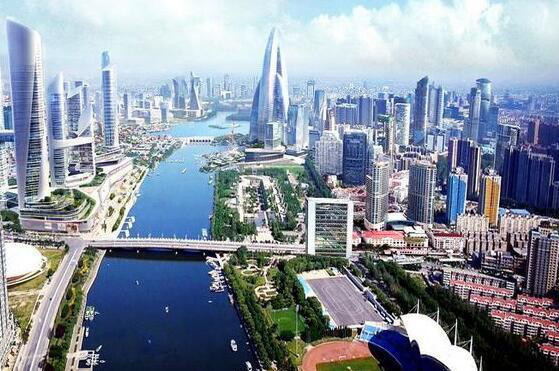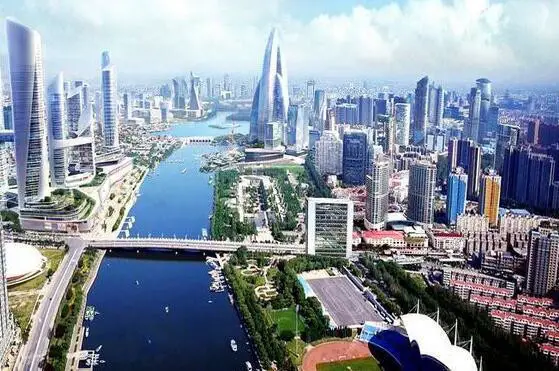By Zhang Mengxu from People’s Daily

China has made accomplishments from its national strategy for Jing-Jin-Ji, a coordinated development plan for Beijing, Tianjin municipality and the neighboring Hebei province. Involving over 100 million population and 1/10 of China’s GDP aggravate, the integration plan is proved to be an effective prescription for the big city disease.
The successful attempt can work as possible solution for the world who is now confronted with overpopulation, traffic congestion, pollution, ecological deterioration and other “symptoms” of the big city disease.
As for China, both the capital city Beijing and Tianjin municipality show a severe case of the disease whereas medium and small-sized cities in the neighboring Hebei province are underdeveloped. The per capita GDP of Hebei province is only 40 percent of that of Beijing and Tianjin.
To address the challenge, the Chinese government, in Feb. 2014, proposed the major national strategy of Beijing-Tianjin-Hebei coordinated development.
By removing Beijing’s non-capital functions, adjusting the economic structure and rationalizing space utilization, China has explored a new path for intensive development and a mode for optimal development of areas with dense population.
Beijing Zoo Wholesale Market was once the largest clothing wholesale market in Asia. Located in central Beijing, the market had 13,000 stands, over 30,000 employees and a 100,000-daily-customer-flow, making the area one of the most heavily congested part in Beijing.
Now, thanks to the integration plan, many proprietors started to relocate their business in a new market in Hebei.
“The new market waived our rent for the first two years and property management fees for the first year. Along with other favorable arrangements, we can roughly save 400,000 yuan ($58,210.6) in two years, which gives us enough time and capital to build our clientele,” said Li Guoyong, one of the traders who moved their shops out of Beijing.
Over the past three years, the strategy has achieved significant results. The three regions not only implemented China’s first trans-regional five-year plan and drafted the plan for Beijing-Tianjin-Hebei space utilization, but also released 12 specific plans on transportation, ecology, industry and other areas as well as a series of policies, which will further advance their integrated and coordinated development.
According to the national plan, industrial integration is a key support for orderly phasing out Beijing’s non-essential functions and boosting the coordinated development.
In the last three years, the three local governments have carried out a batch of major industrial programs. As the result, in 2016, Beijing’s economic growth rate reached 6.7 percent and the service industry contributed to 80.3 percent of the region’s total output value.
In the same period, Tianjin witnessed a 9 percent economic growth, continuing the leading momentum across the country and the economic growth rate of Hebei province arrived at 6.8 percent. The quality of the industries has trumped quantity.
After a plan on regional railway network connecting Beijing, Tianjin and Hebei was approved, it is estimated that by 2030, a 3,400-km intercity railway network will be built and the one-hour traffic circle and the 30-minute commuting circle among the three regions will also take initial shape. By then, working in one city while living in another will no longer be a dream.
Pic:
Construction of urban sub-centers is an important project for the coordinated development of Beijing, Tianjin and Hebei. Pictured is the scheme for the urban sub-center in Tongzhou District, Beijing.
The successful attempt can work as possible solution for the world who is now confronted with overpopulation, traffic congestion, pollution, ecological deterioration and other “symptoms” of the big city disease.
As for China, both the capital city Beijing and Tianjin municipality show a severe case of the disease whereas medium and small-sized cities in the neighboring Hebei province are underdeveloped. The per capita GDP of Hebei province is only 40 percent of that of Beijing and Tianjin.
To address the challenge, the Chinese government, in Feb. 2014, proposed the major national strategy of Beijing-Tianjin-Hebei coordinated development.
By removing Beijing’s non-capital functions, adjusting the economic structure and rationalizing space utilization, China has explored a new path for intensive development and a mode for optimal development of areas with dense population.
Beijing Zoo Wholesale Market was once the largest clothing wholesale market in Asia. Located in central Beijing, the market had 13,000 stands, over 30,000 employees and a 100,000-daily-customer-flow, making the area one of the most heavily congested part in Beijing.
Now, thanks to the integration plan, many proprietors started to relocate their business in a new market in Hebei.
“The new market waived our rent for the first two years and property management fees for the first year. Along with other favorable arrangements, we can roughly save 400,000 yuan ($58,210.6) in two years, which gives us enough time and capital to build our clientele,” said Li Guoyong, one of the traders who moved their shops out of Beijing.
Over the past three years, the strategy has achieved significant results. The three regions not only implemented China’s first trans-regional five-year plan and drafted the plan for Beijing-Tianjin-Hebei space utilization, but also released 12 specific plans on transportation, ecology, industry and other areas as well as a series of policies, which will further advance their integrated and coordinated development.
According to the national plan, industrial integration is a key support for orderly phasing out Beijing’s non-essential functions and boosting the coordinated development.
In the last three years, the three local governments have carried out a batch of major industrial programs. As the result, in 2016, Beijing’s economic growth rate reached 6.7 percent and the service industry contributed to 80.3 percent of the region’s total output value.
In the same period, Tianjin witnessed a 9 percent economic growth, continuing the leading momentum across the country and the economic growth rate of Hebei province arrived at 6.8 percent. The quality of the industries has trumped quantity.
After a plan on regional railway network connecting Beijing, Tianjin and Hebei was approved, it is estimated that by 2030, a 3,400-km intercity railway network will be built and the one-hour traffic circle and the 30-minute commuting circle among the three regions will also take initial shape. By then, working in one city while living in another will no longer be a dream.
Pic:
Construction of urban sub-centers is an important project for the coordinated development of Beijing, Tianjin and Hebei. Pictured is the scheme for the urban sub-center in Tongzhou District, Beijing.
 Menu
Menu
 China’s trans-regional integration plan offers possible solution for big city malaise
China’s trans-regional integration plan offers possible solution for big city malaise
















